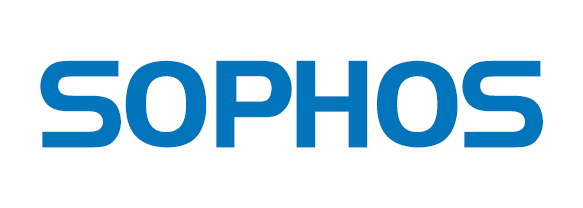The Aged care industry in Australia currently provides employment for more than 350,000 people every year and is serving a population of over 1.3 million at any given time, as quoted by DCWC. The industry is regarded as an economic powerhouse and an indispensable social necessity. In the near future, the industry will grow and flourish at an unprecedented pace since Australia will soon become a service led economy. Deloitte Access Economics Report says that the direct contribution of the aged care industry in improving Australia’s economy has greatly increased and it will soon be equal in contribution to other mainstream industries.
Looking at the recent patterns and prominent factors, growth of the aged care industry is a given. But, service providers can’t rely on their existing working patterns because of the challenges that this industry is faced with. Increasing number of the elderly, changing tech landscape and quick and constant changes in the standard of the services are some of them. To know what the other challenges are and how these will impact functioning of the aged care industry, read on:
1. Changing Government Policies
The Australian Parliament has confirmed that the aged care sector has remained the most regulated industries of all times. These regulations revolve around devising subsidies, allocating licenses and assessing senior Australians for aged care packages. Somewhere in the last year, the Commonwealth government made the auditing and regulatory rules stringent to ensure that quality services are offered. The Government also introduced different levels of homecare packages making the management of the entire scenario cumbersome for service providers.
Tips to Tackle the Challenge:
To manage these changes, the aged care industry should aim to move away from traditional working methods and start investing in the latest technology solutions such as advanced CRM tools.
2. Changes in the Demands of Baby Boomers
A report from APH states that there will be 1.8 million people over the age of 85 in Australia by 2050. Baby boomers are more organised and segmented when compared to the present generation. They have always created separate markets for every service they wanted and are not ready to settle for anything which is substandard. They are quite finicky too. They have also swiftly learnt the use of technology and are exploring new options for getting better services. The entire situation is increasing pressure on the service providers and prompting them to improve services within their budgetary constraints.
Tips to Tackle the Challenge:
Given that the number of seniors is continuously rising and they are now exercising more control over the care packages and facilities, policymakers and service providers should focus on creating a sustainable system which supports the increasing volume of the elderly. Aged care service providers can consider investing in technologies such as Augmented Reality, Virtual Reality, Artificial Intelligence, Video Calling, CRM solutions and more to suit the varying demands of seniors.
3. Lack of Skilled Staff
The Aged care sector is heavily dependent on the skills of the workforce. A McCrindle survey confirms that there will be only five workers per retired couple in 2050. The number clearly indicates that number of elderly is increasing and on the other side the number of skilled workers leaving the sector is rising. Increasing workload and stress, less career growth opportunities, extended working hours and dissatisfaction from the remuneration are some of the main reasons responsible for the drain of skilled employees.
Tips to Tackle the Challenge:
The service providers and Government are taking steps in unison to manage the situation. The Commonwealth government has introduced many reforms and programs which attracts the youth to enter the aged care industry. Also, there are several training programs which helps the workforce to improve their skillsets. Many rules and regulations are also levied to make aged care industry a lucrative career option and make it comfortable for the workforce.


Ready to Improve Your Aged Care Operations?
Reach out to our experts and start the digital transformation journey today.
Book a Free Consultation4. Attracting Skilled Staff to Remote Areas
Recruitment of skilled workforce such as certified care givers and nurses for the facilities based in rural areas is one another challenge faced by the Australian aged care industry. Limited accessibility to transport and absence of adequate technological infrastructure are some of the key factors that makes it difficult for the aged care sector to get skilled employees.
Tips to Tackle the Challenge:
The aged care service provider can manage the situation by investing in the high quality technology solutions and creating a robust infrastructure. They can consider focusing on offering remote working or proper transport facilities by arranging private vehicles or an appropriate bus facility. The aged care service providers with the support of Government can also run some training and education programs for development of the workers.
5. Digital Disruption and Outdated Business Models
The Australian population is ageing gracefully along with an upsurge in the demand of improved healthcare and aged care facilities. Traditional working methods however lacks agility and intelligence and hence they fail to offer required standard of services.
Tips to Tackle the Challenge:
Service providers can adopt an effective digital transformation strategy to upgrade their legacy business models. A digitally enabled business model certainly will enable them to infuse intelligence in to their existing processes which will ultimately boost customer engagement, maintain the standard of their offerings and help the business operate at optimum efficiency.
Along with rapid proliferation of technologies in the aged care sector, the physical amenities are also being modified to accommodate greater number of seniors. The aged care facilities still focus on encouraging social interactions by including certain elements such as golf courses, technological equipment, bowling courses, inviting dining options and more. However, increasing or revamping the existing space is not the answer to all the challenges of the aged care sector. The focus needs to be on creation of a smart space which is equipped with technology and intelligent solutions to make a real impact and provide the level of care to the senior population.
Exigo Tech has recently worked with a few aged care providers in Australia to revamp their business models and cater to the business challenges faced by this sector. Give us a call today to learn how we can help you in designing a technology enabled environment that will alleviate your business challenges and help you serve your seniors better.


Looking for Tailored Aged Care Solutions?
Explore our specialised services and see how we can enhance your operations.
Discover More Here
 Australia
Australia Singapore
Singapore Philippines
Philippines India
India Vivek Trivedi | Mar 20, 2019
Vivek Trivedi | Mar 20, 2019










